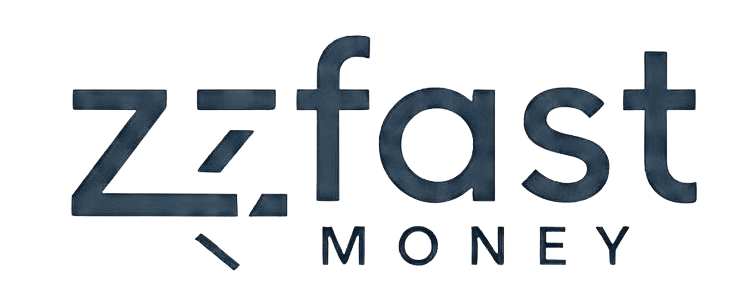Budgeting for the world after 2025$$
Here’s a comprehensive guide to budgeting for the world after 2025, blending timeless fundamentals with modern realities.

Part 1: The New Landscape: What’s Different Post-2025?
To budget effectively, you first need to understand the environment you’re in.
- Persistent Inflation: The high inflation of the early 2020s has made everyone acutely aware of rising costs. Even if it stabilizes, prices for essentials like groceries, housing, and energy are at a new, higher baseline. Your budget needs to be flexible enough to absorb these fluctuations.
- The Hybrid Work Economy: Remote and hybrid work is no longer a temporary measure. This changes spending patterns significantly: less on commuting and work lunches, but more on home utilities, high-speed internet, and home office setups.
- The Subscription Economy: You’re not just paying for Netflix. You’re paying for software, news, cloud storage, meal kits, streaming services, and delivery apps. This “subscription creep” can silently drain your budget.
- AI and Automation in Finance: Financial technology (Fintech) is now powered by sophisticated AI. Apps can now predict your spending, negotiate your bills, and offer hyper-personalized advice, making manual budgeting a thing of the past if you choose.
- Increased Economic Uncertainty: Global supply chain issues, geopolitical instability, and climate events create more volatility. A standard 3-6 month emergency fund may no longer be sufficient for true peace of mind.
- Values-Driven Spending: Consumers are increasingly conscious of where their money goes. Budgeting is becoming a tool for aligning spending with personal values, such as sustainability, supporting local businesses, or ethical investing.
Part 2: The Modernized Budgeting Framework
Forget rigid, unforgiving spreadsheets. The post-2025 budget is dynamic, automated, and values-aligned.
Step 1: Choose Your Modern Budgeting System
Instead of picking just one, consider a hybrid approach. The 50/30/20 Rule is an excellent framework to start with, but we’ll modernize it.
- 50% Needs: Essentials for survival and operation.
- Modern Needs: Housing, Utilities (including high-speed internet), Groceries, Transportation, Insurance, Minimum Debt Payments.
- Post-2025 Consideration: This category is most affected by inflation. You may need to allocate more than 50% temporarily or actively find ways to reduce these costs (e.g., renegotiating insurance, optimizing energy use).
- 30% Lifestyle & Values (The New “Wants”): This is where you consciously design your life.
- Modern Wants: Dining out, Hobbies, Travel, Entertainment, Subscriptions, Shopping.
- Post-2025 Consideration: Frame this category around your values. If sustainability is a value, allocate funds for shopping at farmers’ markets. If community is a value, budget for hosting friends. This turns “wants” into intentional investments in your happiness.
- 20% Future You (The New “Savings & Debt”): This is about aggressive wealth-building and creating security.
- Components:
- High-Interest Debt Annihilation: Credit cards, personal loans. This is your #1 priority.
- The “Hyper-Dynamic” Emergency Fund: Aim for 6-12 months of essential living expenses, kept in a High-Yield Savings Account (HYSA).
- Retirement Investing: Maxing out tax-advantaged accounts (401k, Roth IRA).
- Sinking Funds: Savings for specific, large future purchases (new car, home down payment, major vacation).
- Components:
Step 2: Embrace Automation & AI
Manual tracking is prone to error and burnout. Let technology do the heavy lifting.
- Connect Your Accounts: Use an app like Copilot Money, Monarch Money, or YNAB (You Need A Budget). These apps use AI to automatically categorize your spending, track subscriptions, and show you your net worth in real time.
- Set Up Predictive Alerts: Modern apps can warn you if you’re on track to overspend in a category before it happens.
- Automate Bill Negotiation: Use services like Rocket Money (formerly Truebill) or Trim. They can find and cancel unwanted subscriptions and even negotiate with providers (like cable or internet) on your behalf to lower your bills.

Step 3: Implement Actionable Strategies
These are the specific tactics you’ll use within your framework.
- Conduct a Monthly “Subscription Audit”:
- Go through your bank and credit card statements.
- List every single recurring charge.
- For each one, ask: “Did I use this? Did it bring me value equal to its cost?”
- Be ruthless. Cancel what you don’t use. Consider annual plans for services you know you’ll keep, as they are often cheaper.
- Master the “Sinking Fund” Strategy:
- Identify large, predictable-but-infrequent expenses for the next 1-3 years (e.g., new laptop: $1,500; holiday travel: $1,200; car insurance premium: $800).
- Divide the total cost by the number of months you have to save.
- Example: New laptop in 10 months = $150/month.
- Automate a transfer of that amount each month into a dedicated HYSA. This prevents “surprise” expenses from derailing your budget.
- Budget for Variable/Gig Income:
- If you have irregular income from a side hustle or freelance work, open a separate bank account for it.
- When you get paid, immediately transfer a set percentage (e.g., 25-30%) to a different savings account for taxes.
- From the remainder, pay yourself a consistent “salary” into your main checking account every two weeks. This smooths out the income rollercoaster.
- Stress-Test Your Budget:
- Once a quarter, run a “fire drill.”
- Ask: “What if my income dropped by 30%?” or “What if I had an unexpected $2,000 car repair?”
- Identify which “Lifestyle & Values” expenses you would cut first. This mental exercise prepares you for real emergencies and highlights the importance of your emergency fund.
- Prioritize Digital Financial Security:
- Use strong, unique passwords for all financial accounts.
- Enable Two-Factor Authentication (2FA) everywhere.
- Be wary of phishing scams, which are becoming more sophisticated with AI.
- Regularly check your credit report for free via AnnualCreditReport.com.
Summary: Your Post-2025 Budgeting Checklist
- Framework: Start with the Modernized 50/30/20 rule (Needs / Lifestyle & Values / Future You).
- Tools: Choose an AI-powered budgeting app (Copilot, Monarch) to automate tracking and analysis.
- Emergency Fund: Build a 6-12 month emergency fund in a HYSA.
- Debt: Aggressively pay down high-interest debt.
- Subscriptions: Conduct a monthly subscription audit.
- Future Expenses: Use sinking funds to save for large, planned purchases.
- Automation: Automate your savings, investments, and bill payments.
- Review: Set a 15-minute calendar appointment each week to review your spending and a 1-hour appointment each quarter to stress-test your budget and adjust your goals.
By adopting this forward-looking approach, your budget will transform from a restrictive document into your most powerful tool for building wealth and living a life aligned with your values in a complex world.



